Portable chicken coops are ideal for preppers who keep small livestock as part of their survival plan. With a mobile chicken coop you can save both space and money without sacrificing predator proofing materials – and use the meat and egg bird enclosure like a chicken tractor, as well.
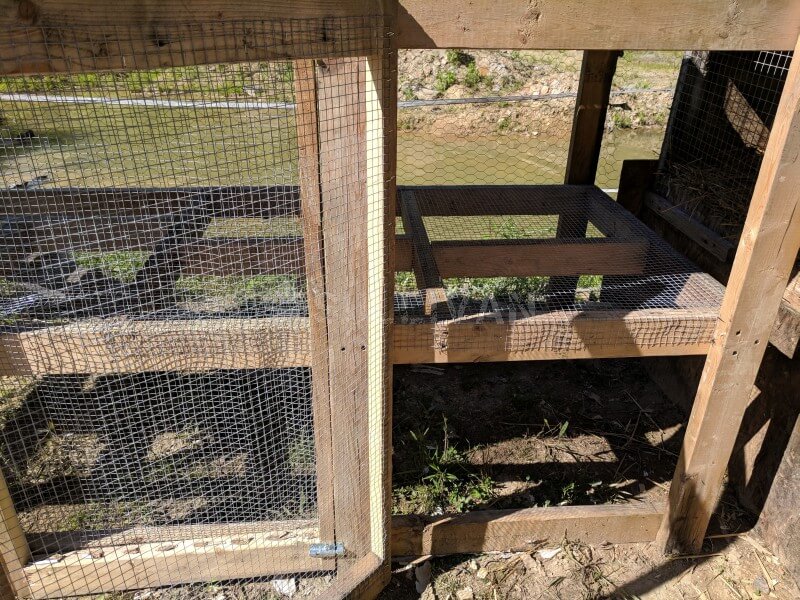
Preppers who keep chickens in portable coops can easily and quickly maneuver it up a ramp and onto a waiting a trailer in a bugout situation.
Even preppers, or survival homesteaders, who live in small towns and suburbia can keep a little flock of birds to provide meat and eggs for their family during a SHTF situation by keeping them in a rabbit hutch style chicken coop – without or without the small tractor wheels.
You can build a rabbit hutch style chicken coop (plans at bottom of this article) or retrofit a rabbit hutch you already have but aren’t using, on your prepper retreat.
Inexpensive, if sometimes fixer upper, rabbit hutches are often spotted along farm roads in rural areas, on local Facebook trading post pages, and on Craigslist at a very low cost.
Buying a prefabricated chicken coop kit from a store like Tractor Supply or Rural King would give you essentially this same design – but charge a whole lot more money to get the project built.
We used two freebie rabbit hutches in our survival chicken coop build. While they were free from the side of the road, we did have to clean out rabbit skeletons and some nasty old bedding, disinfect them, and replace some rusty wire.
But, they were free and worth rolling up our sleeves and getting our hands dirty to acquire.
In addition to remodeling the free rabbit hutches, we built another one from scratch to make the chicken coop large enough to serve all of our chickens and ducks. We opted to connect them all together so the birds could run along the bottom portion of all three.
This reduces the portability of the coop, but does not make moving them impossible. It would only take about 10 minutes to remove the 2 x 4 boards and hardware cloth that connects the rabbit hutches, and screw a pre-cut board to close the open ends on each.
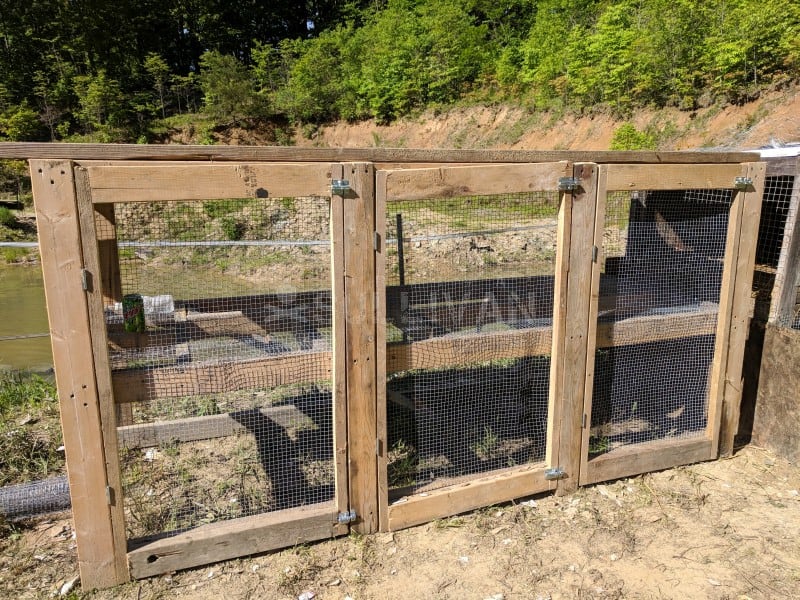
Predator Proofing the Portable Survival Chicken Coop
Bottom
Like chicken tractors, the survival chicken coop does not have a solid bottom. At first, the idea of not having a bottom to the coop flipped me out more than a little bit.
Our old chicken coop had a bottom that rivaled Fort Knox. But, our attached chicken run did not, and not a single predator got inside.
The perimeter of the chicken run was trenched about 1 foot deep and 1 foot wide. We place hardware cloth (rabbit hutch wire) inside the trench, overlapping on each the interior and exterior side about six inches.
The trenched hardware cloth kept the burrowing predators in our region – mink, raccoons, and fox, out of the run. We employed the same tactic when building the rabbit hutch style coop.
The space beneath the wood frame was trenched, and one layer of hardware cloth placed inside, overlapping on the interior and exterior sides.
If you do not plan on putting wheels on the survival chicken coop and using it as a survival tractor, you would put a metal or wood based – or a combination of the two, on the bottom of the survival chicken coop.
Even when using pressure treated lumber boards or plywood, it will rot over time due to drawing moisture from the ground.
In our old chicken coop, we layered 4 X 8 pressure treated lumber, hardware cloth, and a second layer of the same lumber to build the predator proof floor.
Back and Sides
Disclosure: This post has links to 3rd party websites, so I may get a commission if you buy through those links. Survival Sullivan is a participant in the Amazon Services LLC Associates Program. As an Amazon Associate, I earn from qualifying purchases. See my full disclosure for more.
The backside of the rabbit hutch chicken coop was double layered with chicken wire. This type of wire is really only good for keeping birds in, and not predators out.
I would never recommend relying on chicken wire to protect birds in an overnight situation – or during the daytime if not bordered with hardware cloth in a region with only small or infrequent daytime predators.
I placed the chicken wire on the back of the coop just as another and final layer of protection against predators. On top of the wire we secured pressure treated wood planks into place. On top of the wood planks a piece of sheet metal was screwed in.
The wood and metal will protect the birds from both predators and the elements, without making each coop section too heavy to move.
The exterior ends of our three section chicken coop were closed following the same chicken wire, wood, and sheet metal pattern. The small chicken coop in the middle is accessible by the flock only on the bottom layer.
I chose to keep the top layer closed to the flock so it could be used as either an outdoor brooder for chicks, ducklings, or keets – or as a quarantine space for an injured bird.
Top
The top of the coop was built using the same method as noted above when creating the back. A double layer of chicken wire, followed by pressure treated lumber, and a sheet metal roof.
You could use shingles for the roof, but they will have to be replaced years before the metal sheeting will be – and we had extra metal sheeting in my husband’s junk pile – or prepper treasure trove, as he prefers to think of it.
The sheet metal was elevated slightly, about 1 and a half inches in the front so the any rain, snow, or ice that fell onto the rabbit hutch style chicken coop would roll off.
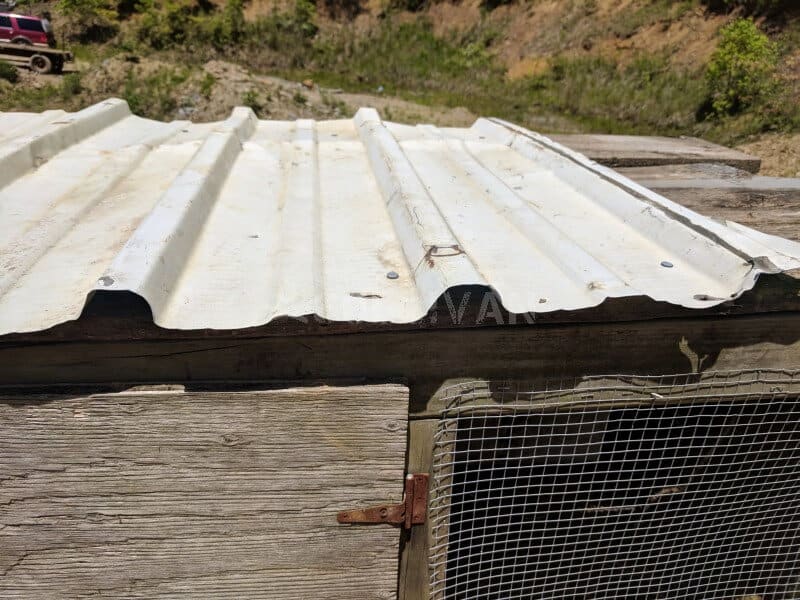
Middle
The middle of the rabbit hutch chicken coop was framed out with pressure treated 2×4 boards. Hardware cloth was stapled to the support frame to create living quarters, and a nesting box for the chickens.
A space was cut out of the hardware cloth to create a place to attach a ladder with “steps” screwed into it so the flock members could walk from the bottom level to the upper level.
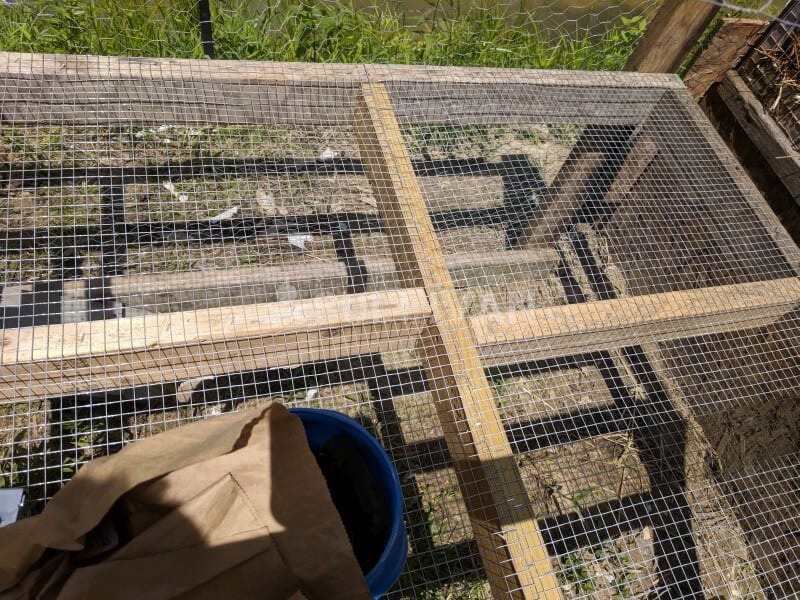
Place the ladder at the most slight angle possible so the birds (especially ducks) are not afraid to climb it. I recommend placing the steps as closely together as possible – about two inches apart, so chicks and ducklings can traverse it easily after they are relocated from the brooder into the survival chicken coop.
Front
The front of the portable survival chicken coop was framed in on both the top and bottom to create a 2-story enclosure. If you are tight on space, the bottom of the coop could be used for a run and the top as sleeping quarters and nesting box space.
2 X 4 boards, 2 and a half inch decking screws, and hardware cloth were used to build a double decker door to allow for easy cleaning and egg gathering access. We used thick hinges and 2 step locks placed at both the top and bottom of each door to secure them into place:
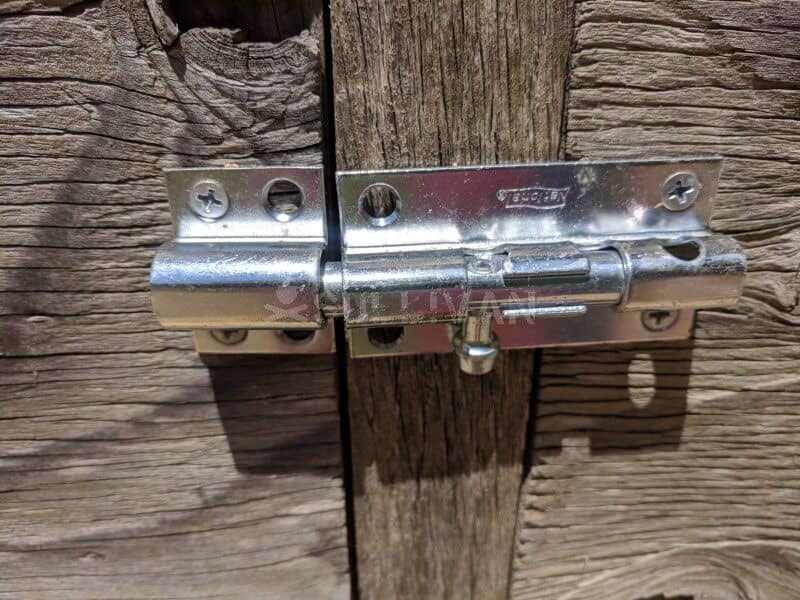
A raccoon can easily manipulate a single step log. Never skimp on hardware; doing so could cost your an entire flock in as little as one night.
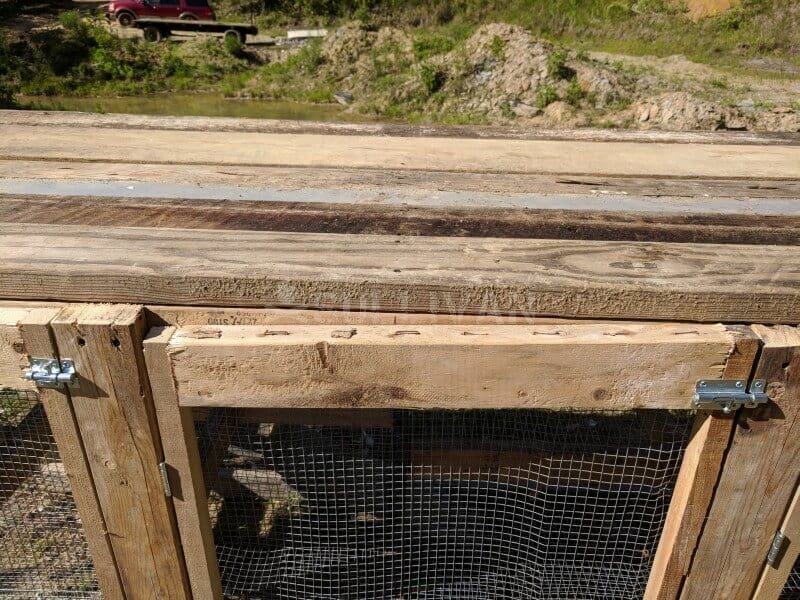
Tour of the Survival Chicken Coop
Chicken Coop Run
Because our survival homesteading retreat encompasses 56 acres, we had the space available to create a large run, and attach it to the rabbit hutch chicken coop. Although my flock tends to free range during the bulk of the day, that might not always be the case.
During a long-term disaster, free ranging the flock means risking a bird that cannot be immediately replaced by running to a local breeder or ordering from an online supplier.
I believe birds remain the healthiest and cheapest to feed when allowed to partake of their natural diet as much as possible. A large chicken run helps to accomplish this task when free ranging is not a possibility.
In my personal experience, giving the chickens and other flock members plenty of room to run significantly cuts down on both injuries and diseases.
You can tie the run directly into you coop to cut down on the expense of wire and metal T-posts, and simply quickly detach it using wire cutters if the coop suddenly needs to become portable during a bugout scenario.
If you do not want to have the extra few minutes tied up in detaching the run during a bugout situation when so many other tasks also need to be completed rapidly. Invest a little more money in posts and place them directly against the run – but do not tie them to it using hardware cloth.
The perimeter of the run was trenched and hardware cloth placed inside, overlapping on the exterior and interior of the run for the sake of predator protection.
A wood frame was built to place inside the trench and attached to support posts that also dot the perimeter of the survival chicken coop run.
The board frame will help keep the hardware cloth firmly in place no matter how often the ground gets muddy, floods, or becomes hardened by either extreme cold or hot weather.
Another bonus to building the wood frame involves the attaching of the chicken wire sides firmly to the base of the run perimeter. If you live in a region with deadly daytime predators either small or large, use hardware cloth instead of chicken wire for the daytime run.
The chicken wire simply needs to be stapled to the board frame to secure it into place. If you skip the wood frame, the chicken wire will need to be tied with sturdy but flexible wire to the hardware cloth in the trench all the way around the run.
I have done this before, and even on smaller runs, it takes several hours to secure in place properly to prevent predator entry.
The run on our new survival chicken coop is roughly 12 feet wide by 22 feet long – I so did not want to be tying wire every inch to inch and a half all the way around it. Thanks to the board frame, the chicken wire side panels only have to be wired to the T-posts.
I choose to wire them at the top, middle, and bottom with three sets of wire, and then wire in-between each section with a single or double set of wire to feel confidant the post and the wire can withstand wind, pushing on the section by a predator or noisy goat that happens by. Our goat herd free ranges too and keeps our woods trimmed back to earn their keep.
Run Top
The top of the survival chicken coop run is a combination of double layered bird netting and chicken wire. Again, if you live in a region with large predators, the entire run should be created using hardware cloth.
During the daytime, we only have to contend with the occasional hawk or, infrequently, a fox. Our livestock guardian dogs prevent foxes from getting anywhere near our barnyard – the mini donkeys do their part and kick the stuffing out of any fox or coyote that comes near their territory.
The minis roam our survival retreat, so basically anywhere within our boundary fence, they consider their territory. If you have the space for it, I highly recommend getting a couple miniature donkeys, they are definitely worth what it costs to feed and house them, they can pull a cart, and give joy rides to children, as well.
The bird netting and/or chicken wire is attached to the rabbit hutch chicken coop with staples and to the side panels of the run and T-posts with tightly wrapped flexible yet strong wire.
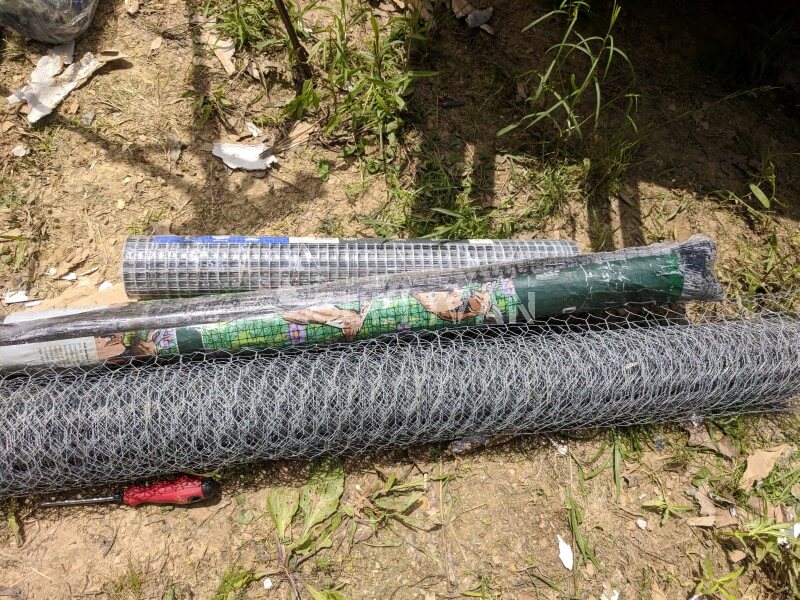
Run Door
A barn style door is mounted between two pressure treated wood posts to comprise the survival chicken coop run door. The door is lined with a double layer of chicken wire on both sides – just in case a bit of the wood ever shifts or cracks.
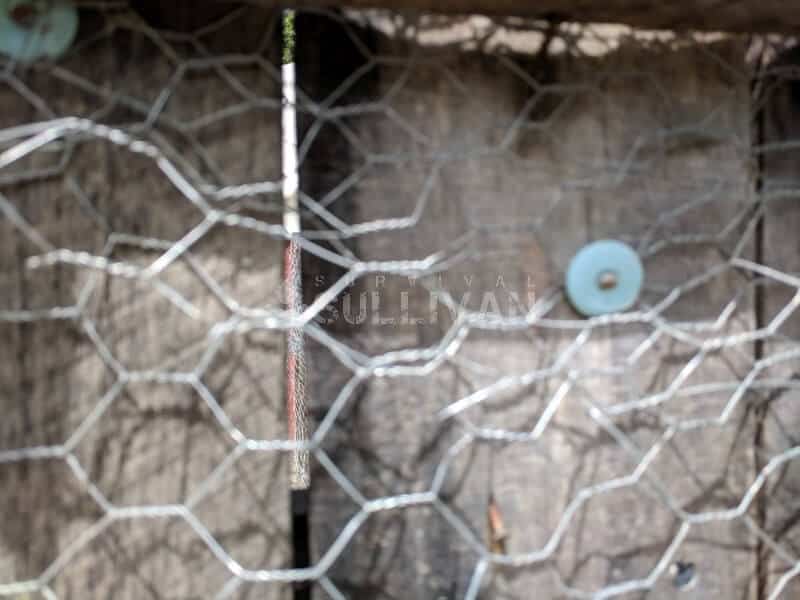
The door features a sturdy 2 step lock. It also has hardware cloth attached to a portion of the door just beneath the lock running all the way to the ground.
The hardware cloth wraps around the door post and rests on a tea cup hook to give additional protection against predators that would attempt to claw between the door post and door to attempt to garner entry inside.
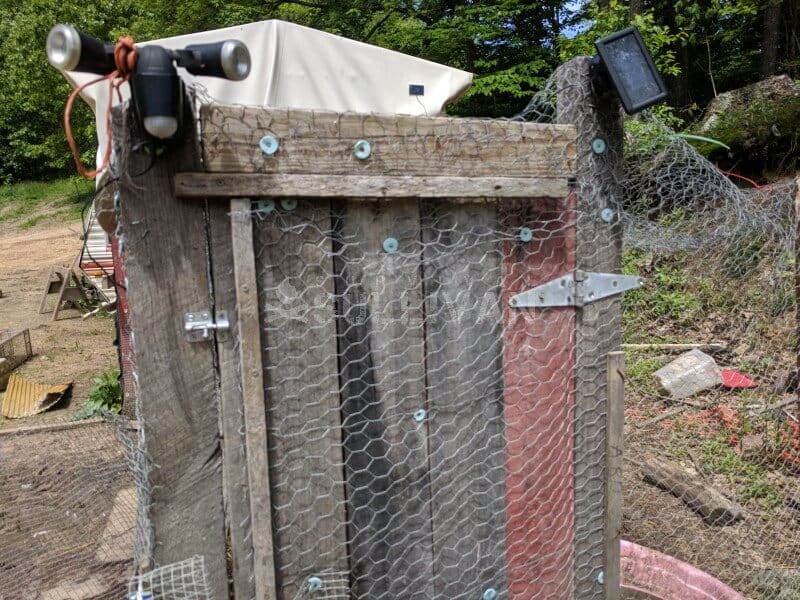
The top of the door has a motion detector solar light attached to deter nocturnal predators. The dangling CD reflects the light of the sun like a prism to help deter hawks.
Tour Of The Chicken Run
How large you build a rabbit hutch style survival chicken coop tractor on your prepper retreat will depend on how much space you can devote to the project and the number of birds in your flock.
If you are not experienced in building a coop or hutch from scratch, this roundup post with free rabbit hutch plans should help guide you through the basic construction components – after you determine the dimensions to fit your available space and flock.
Watch the video below if you need help figuring out how to put retractable wheels and a tow rope on a chicken tractor.
How to Put Wheels on a Chicken Tractor:
Each of my hens have their own nesting box, but some keepers build only a few nesting boxes for hens to share as they lay eggs. The large doors on the front of the survival chicken coop will give you easy access to eggs and also serve as multiple exit points for the flock so they don’t get in to a panicked rush to leave the coop each morning for leisure time in their run.
I train my birds to put themselves up at night by giving them a healthy treat. This way I do not have to chase my flock around the run for 20 minutes to usher them all inside to safety.
Sometimes my guineas elect to sleep in the run, which is fine because their sole purpose is to protect my chickens and ducks -and maybe eat as many ticks as they can find.
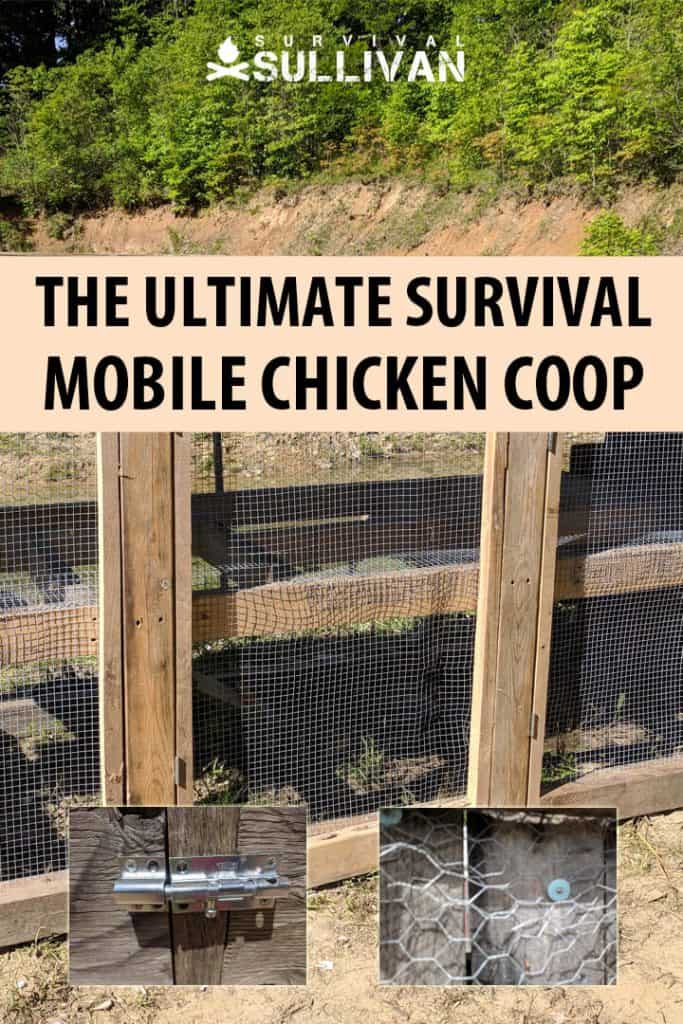

Tara Dodrill is a homesteading and survival journalist and author. She lives on a small ranch with her family in Appalachia. She has been both a host and frequent guest on preparedness radio shows. In addition to the publication of her first book, ‘Power Grid Down: How to Prepare, Survive, and Thrive after the Lights go Out’, Dodrill also travels to offer prepping tips and hands-on training and survival camps and expos.
